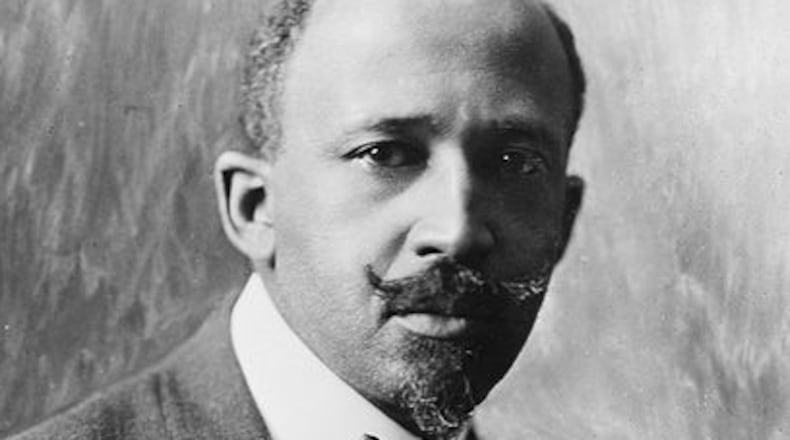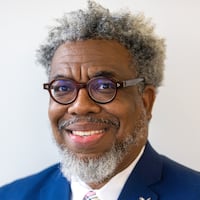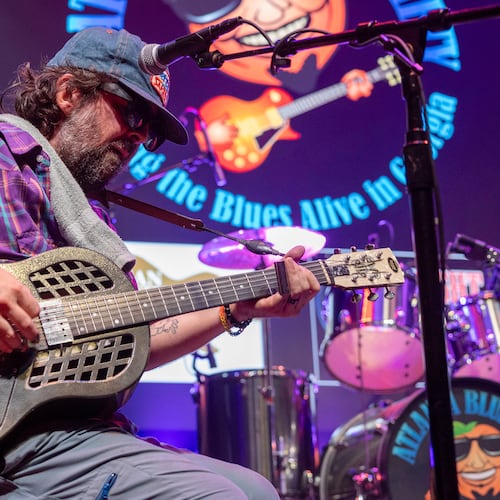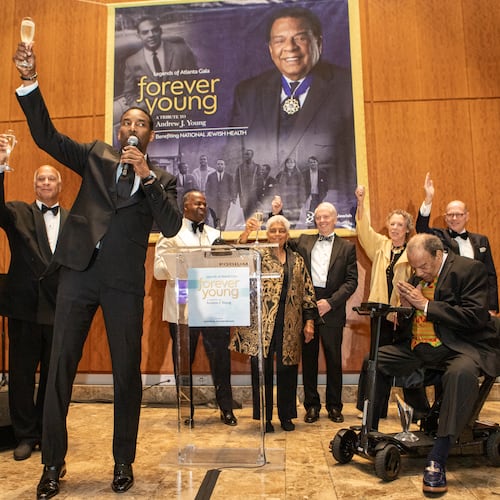It can be argued that even before the Harlem Renaissance, the concept of Black intellectualism was born right here in Atlanta. In 1897, just a year after becoming the first African American to earn a Ph.D from Harvard University, W.E.B. Du Bois moved to Atlanta to teach at the prestigious Atlanta University (now Clark Atlanta University).
He taught sociology and history at Atlanta University while writing “The Study of the Negro Problems” and “The Philadelphia Negro.”
But in 1903, he wrote “The Souls of Black Folks.”
At 14 chapters, it is a relatively thin book, but it serves as a cornerstone of Black studies and literature and would become his magnum opus. In the last decade, we have written a lot about Du Bois in The Atlanta Journal-Constitution’s Black History Month series. And for good reason.
He is the foundation of Black intellectualism.
Here are 10 stories that reflect Black scholarship, movements and influences.
The Harlem Renaissance
In 1925, scholar Alain Locke described the Harlem Renaissance by saying “Negro life is seizing its first chances for group expression and self-determination.”
Spanning roughly from 1917 to 1935, it was a period when Black culture, art, music and social activism flourished in ways never seen before.
While it wasn’t confined there, Harlem was the cultural mecca, attracting Black artists, writers, photographers, musicians and poets — with many fleeing the oppression of the South and seeking freedom to develop their talents.
The Doll Tests
It was a simple setting. A Black child walks into a room and sits across from two dolls — one Black and one white.
The child is asked a series of questions.
Which doll is pretty? Which doll is ugly? Which doll is bad? Which doll is good? Which doll do you want to play with?
Overwhelmingly, this Black child, the product of segregated schools and influenced by Jim Crow degradation, shows a preference for dolls with white skin. The child is then asked, “Which doll looks like you?”
The child stormed out of the room and became “emotionally upset at having to identify with the doll that they had rejected.”
That was the famous Doll Tests, conducted in the 1930s and 1940s by Mamie and Kenneth Clark, a husband-and-wife team of African American social psychologists. Their groundbreaking psychological experiments offered proof of the pernicious effects of segregation.
The Talented Tenth
Credit: Library of Congress
Credit: Library of Congress
In a landmark 1903 essay in the book “The Negro Problem,” Du Bois argued that America was in the dawn of a new generation of African Americans coming to terms with how to fully exploit their freedoms.
The question was, he wrote, in what direction should they lead?
In his essay, “The Talented Tenth,” Du Bois argued that the best way to uplift the race was to bolster the efforts and education of the brightest and most talented, who would then bring along the others.
“The Negro race, like all races, is going to be saved by its exceptional men,” Du Bois wrote. “The problem of education, then, among Negroes must first of all deal with the Talented Tenth; it is the problem of developing the best of this race that they may guide the mass away from the contamination and death of the worst, in their own and other races.”
DuBois’ emphasis on a classical education was in direct conflict with Booker T. Washington, who argued that the sons and daughters of former slaves would be better served with an industrial education.
Today, more than a century after DuBois popularized the concept of the Talented Tenth, scholars are still debating its meaning.
The Tragic Mulatto
In 1842, when Lydia Maria Child published her “The Quadroons,” she wanted to draw attention to the taboo topic of biracial children of slaves and slave masters.
Her short story was to describe the horrors of how the children were treated by whites.
The mixed-race woman in the story, Xarifa, was enslaved after others discovered her Black heritage. The product of sexual violence becomes the victim of sexual violence. In the end, after being raped and abused by the man who bought her, she dies by suicide.
The character became a standard trope in early Black literature and in media produced about African Americans, often deepening racial distrust between Blacks and whites and among African Americans.
Think Peola in the 1934 film “An Imitation of Life.”
The Niagara Movement
Credit: Library of Congress
Credit: Library of Congress
Du Bois called The Niagara Movement “one of the greatest meetings that American Negroes ever held.”
In 1905, Du Bois and William Monroe Trotter formed the Niagara Movement, a Civil Rights organization aimed at fighting racial segregation and disenfranchisement. It was named for the “mighty current” of change the group wanted to effect and adopted Niagara Falls as its symbol.
The group only lasted about five years but would go on to influence the start of other organizations, like the NAACP and Alpha Phi Alpha, the first Black college Greek fraternity.
The New Negro
Credit: NY Public Library Public Colletions
Credit: NY Public Library Public Colletions
According to some scholars, “The New Negro,” written in 1925, was the first literary attempt to uplift the perceptions of Black America since Du Bois published “The Souls of Black Folk” in 1903.
“The Negro himself has been more of a formula than a human being … a something to be argued about, condemned or defended … a social bogey or a social burden,” wrote scholar Alain Locke, who served as Chair of the Philosophy Department at Howard University for many years.
Locke wrote that the “Old Negro,” shaped by slavery, was more a myth than a man, and his day had come to an end.
The New Negro, particularly among the younger generations, was no longer too distracted or depressed to have a perspective on art or to offer informed critical awareness of self or society. “The American mind must reckon with a fundamentally changed Negro,” Locke wrote.
Double Consciousness
As tough as it was for Black people to deal with day-to-day struggles and indignities, they also had to deal with their own internal struggles about where they belonged. Du Bois called it “double consciousness” and defined it as the struggle African Americans face to remain true to their Black culture while at the same time conforming to the dominant white society.
“It is a peculiar sensation, this double consciousness, this sense of always looking at one’s self through the eyes of others, of measuring one’s soul by the tape of a world that looks on in amused contempt and pity,” Du Bois wrote in “The Souls of Black Folk.”
For Du Bois, the threat of being “torn asunder” by the two warring ideals was literal.
“One ever feels his two-ness,” Du Bois continued. “An American, a Negro; two souls, two thoughts, two unreconciled strivings; two warring ideals in one dark body, whose dogged strength alone keeps it from being torn asunder.”
The Afro
Credit: AP and AJC file
Credit: AP and AJC file
Coming in the wake of the Civil Rights Movement, the Afro hit the 1970s like a thunderbolt.
On men, the Afro meant seriousness, depth and a full embrace of Black manhood. Kareem Abdul-Jabbar. Jim Brown. Max Robinson. Muhammad Ali. Richard Roundtree. Even James Brown took out his conk for a while to sport an Afro.
On the Black woman, the Afro was a commanding symbol of strength and beauty. Angela Davis. Maya Angelou. Minnie Riperton. Aretha Franklin. The Afro was never tolerant and compromising.
It was a form of beauty that did not require white validation like a perm or conk, which chemically straightened the hair to make it appear like white men.
It was anti establishment.
It was Black.
The Million Man March: A day of atonement
The size of the crowd, and whether it reached one million was debated. But the enthusiasm of those who came was undisputed.
The 1995 Million Man March on Washington, D.C., was a life-changing event for many. Organized and headlined by Nation of Islam leader Louis Farrakhan, the gathering was a call to Black men to seek atonement for their indiscretions as well as encouragement to become better husbands, fathers, sons, brothers and friends.
The Negro leagues
Consider a baseball world where Hank Aaron, Willie Mays and Rickey Henderson, three legends we just lost, were not welcome.
Or imagine the Atlanta Braves without the sensational Michael Harris II roaming center field?
But up until 1947 and the debut of Georgia native Jackie Robinson with the Brooklyn Dodgers, men like Aaron, Mays, Henderson and Harris “existed” only in the Negro leagues. Roughly between 1920 and the debut of Robinson, the Negro leagues were an alternate universe full of stars like Buck Leonard, Satchel Paige, Josh Gibson, Cool Papa Bell, Judy Johnson, Martin Dihigo, Turkey Stearnes and Pop Lloyd.
Aaron, who would drive in more runs than anybody in Major League history, started in the Negro leagues. He was just one example. Imagine what the others could have done.
ABOUT THIS SERIES
This year’s AJC Black History Month series, marking its 10th year, focuses on the role African Americans played in building Atlanta and the overwhelming influence that has had on American culture. These daily offerings appear throughout February in the paper and on AJC.com and AJC.com/news/atlanta-black-history.
Become a member of UATL for more stories like this in our free newsletter and other membership benefits.
Follow UATL on Facebook, on X, TikTok and Instagram.
About the Author
Keep Reading
The Latest
Featured












